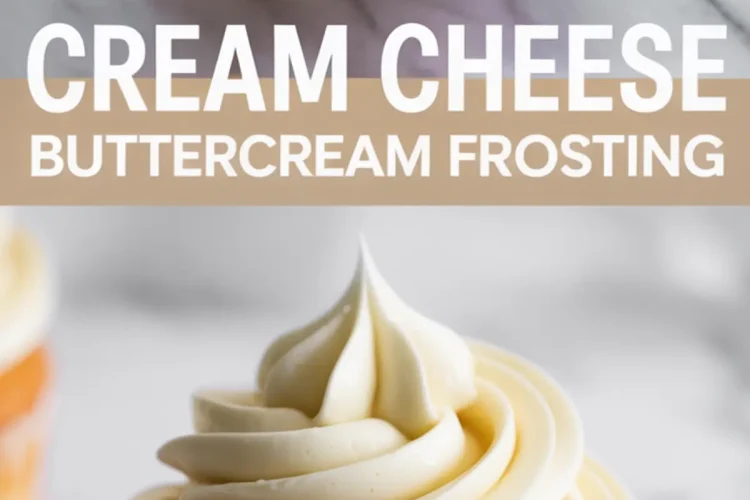Cream cheese buttercream frosting has a loyal following, and for good reason. This is the cake frosting recipe I use when I want flavor to do the heavy lifting. You’ll learn how to make a butter cream cheese frosting that pipes with sharp edges, holds its shape for hours, and delivers a balance between sweet and tangy.
If you’ve ever searched for an easy cream cheese buttercream frosting or struggled with a homemade cream cheese icing that melted before the party started, you’re in the right place. I’ll walk you through my method and choices from why I keep the cream cheese cold to how I adjust the sugar.
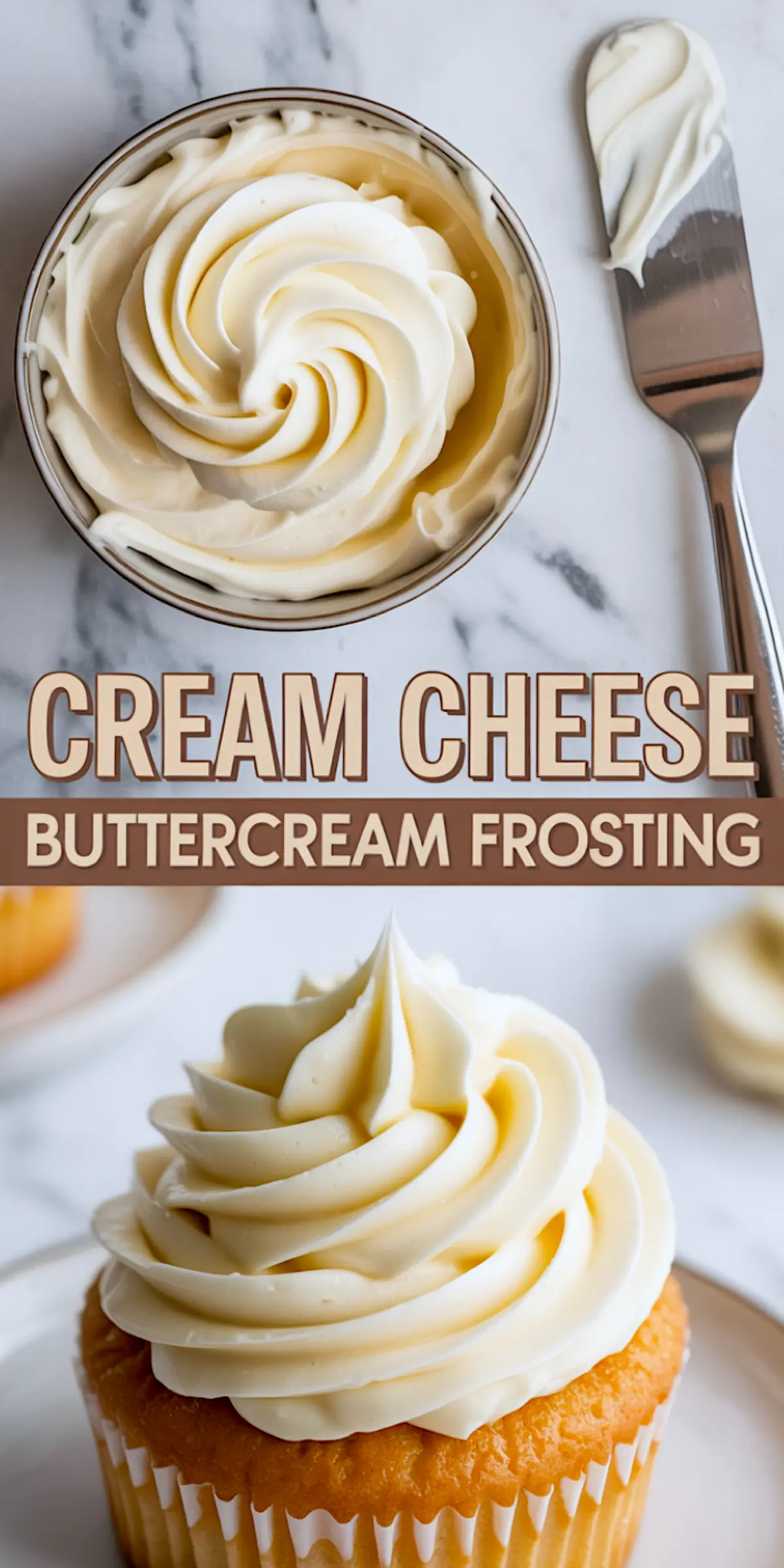
Cream Cheese and Butter: Finding the Right Texture First
I’ve tested this with room-temperature cream cheese and butter, but the results never satisfied me. Using full-fat, brick-style cream cheese straight from the fridge stops the frosting from going slack. The butter, however, must be soft. Not greasy. Just enough to leave a fingerprint when pressed.
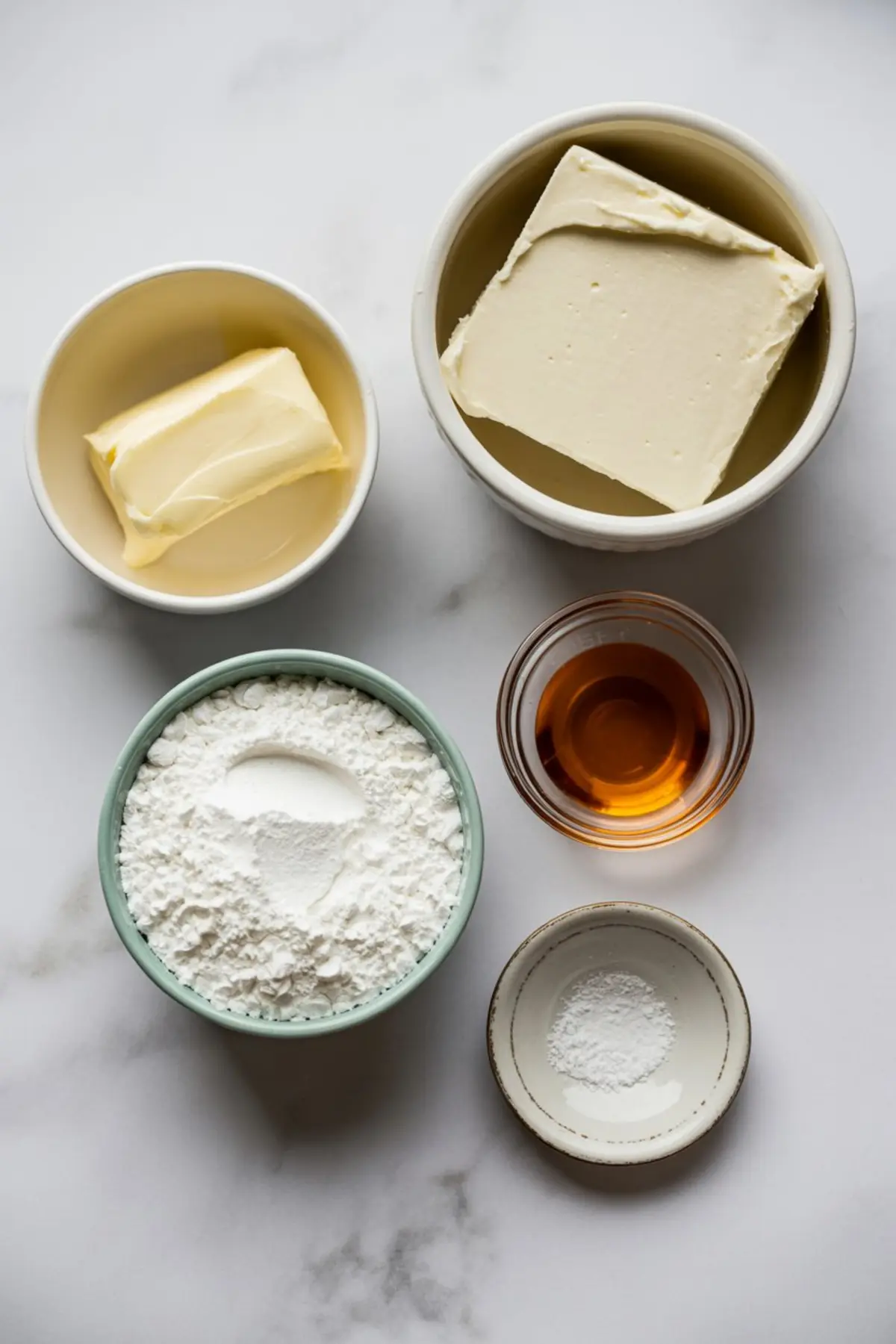
This contrast helps with structure. The cold cream cheese firms things up while the softened butter allows for whipping. The two come together in the mixer like they know what they’re doing.
Some bakers swear by equal parts, but I’ve found that one full cup of butter to one block of cream cheese gives the lightest, most pipeable texture.
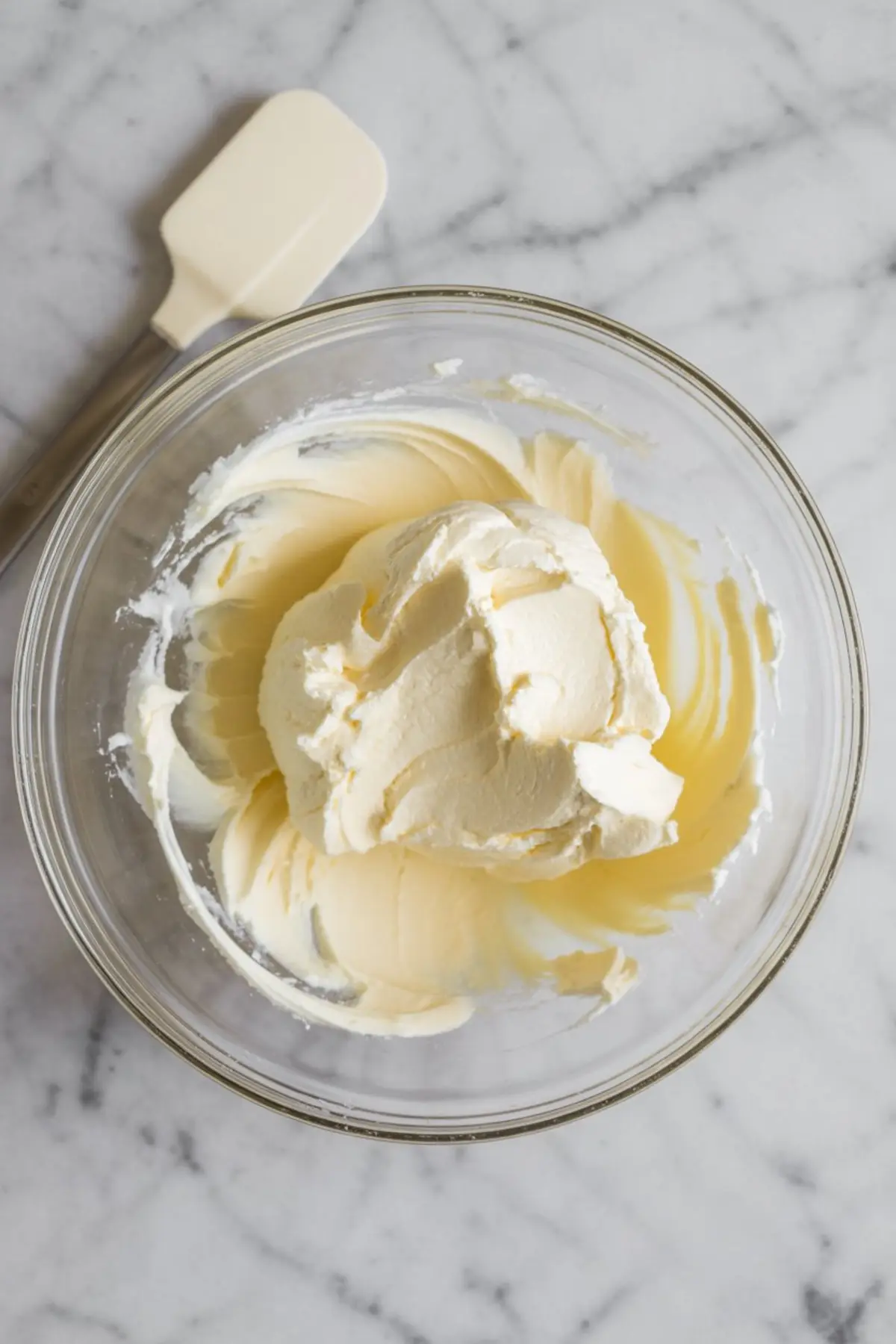
If you’re interested in experimenting, you can also try my Cool Whip Cream Cheese Frosting for a fluffier, lighter version.
Why Sifting Sugar Isn’t Optional Here
Powdered sugar has a mind of its own. When unsifted, it leaves lumps behind that ruin the smoothness you’re working hard to achieve. I always sift first, then start with 4½ cups. That gives me control. If I want the frosting to be firmer for piping roses or detailed swirls, I gradually add up to 5 cups.
It’s the kind of frosting that feels rich without being heavy. The sugar softens the tang of the cream cheese, while still letting its character shine through.
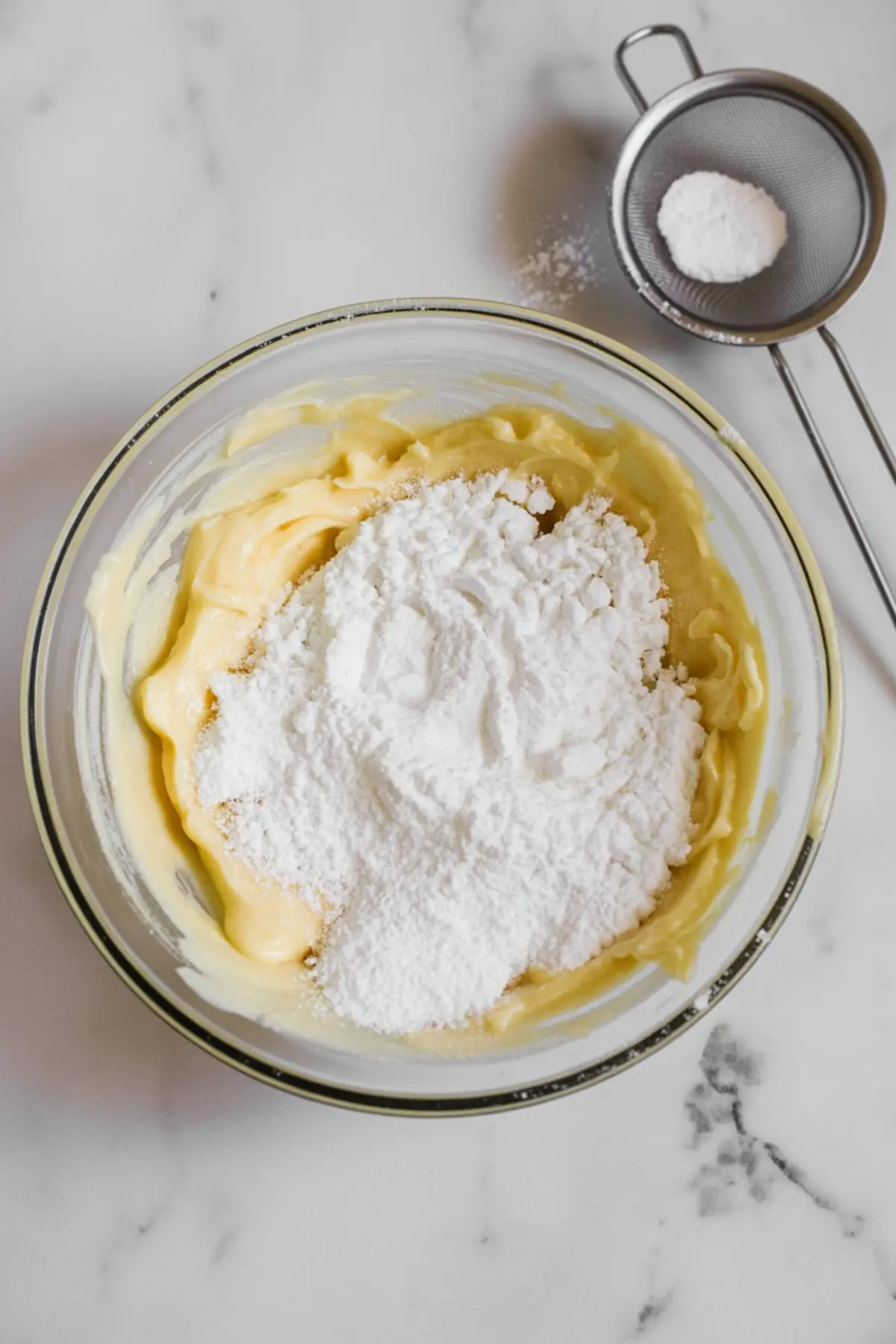
If you’ve ever worked with whipped frostings before, the sugar ratio here will remind you of how I balance things in my Whipped Cream Frosting. That one’s softer, but the principle stays the same.
The Mixer Does the Heavy Work. You Decide the Finish.
There’s a sweet spot for mixing. I beat the butter first until it almost looks like mousse soft peaks, pale yellow, and full of air. Then I add the cold cream cheese and let the mixer run just long enough to blend.
Overmixing the cream cheese once it’s in the bowl can make everything go slack. I keep a close eye. The second the texture smooths out, I stop.
At this point, the sugar goes in slowly. This gives the mixer time to pull everything together. By the end, the frosting should hold stiff peaks and feel thick but workable.
You’ll notice this method gives you more control than softer versions like Maple Cream Cheese Frosting, which are meant to spread more than pipe.
Vanilla and Salt: Small Ingredients, Big Results
Vanilla extract is more than a flavor boost. It deepens the profile of the frosting and rounds out the sharpness of the cream cheese. I use two teaspoons. Less tastes flat. More starts to overpower.
Salt pulls it all together. Just a pinch. Enough to ground the sweetness without making it salty. I sometimes use fine sea salt here, as it blends faster.
I’ve tried versions with lemon zest or almond extract, but vanilla remains the one I come back to. It behaves well with all cake types.
Buttercream vs. Cream Cheese Buttercream: What Changes the Outcome
In my notes, I’ve compared this frosting side by side with my Vanilla Buttercream Frosting. Both pipe beautifully, but the vanilla version is sweeter and lighter.
The cream cheese frosting has weight. Not in a bad way it just feels more structured. If you’re frosting something like red velvet or pumpkin cake, that balance of sweet and tangy adds depth.
On vanilla cupcakes, I often choose between the two based on weather. Warmer day? I go cream cheese. It holds better.
Serving Notes and Storage Tips From Experience
This frosting performs best when slightly chilled. After piping, I let the cake sit in the fridge for 10 to 15 minutes. It firms just enough to hold up in transport or under lights.
Stored in an airtight container, it keeps for 3 to 4 days in the fridge. I always bring it back to room temperature and rewhip for a few seconds before using leftovers.
If you want sharper piping results, chill your piping bag for 5 minutes before decorating. It’s a small step that helps when making detailed borders or swirls.
Save and Share Your Cakes With Me

This butter cream cheese frosting has been my go-to for years. I trust it on birthday cakes, cupcakes for school parties, and layer cakes that need to hold overnight.
Pin this recipe so you can find it next time your frosting slides or melts. And I’d love to hear from you leave a comment below if you try it, or ask a question if something feels uncertain.
Cream Cheese Buttercream Frosting Recipe
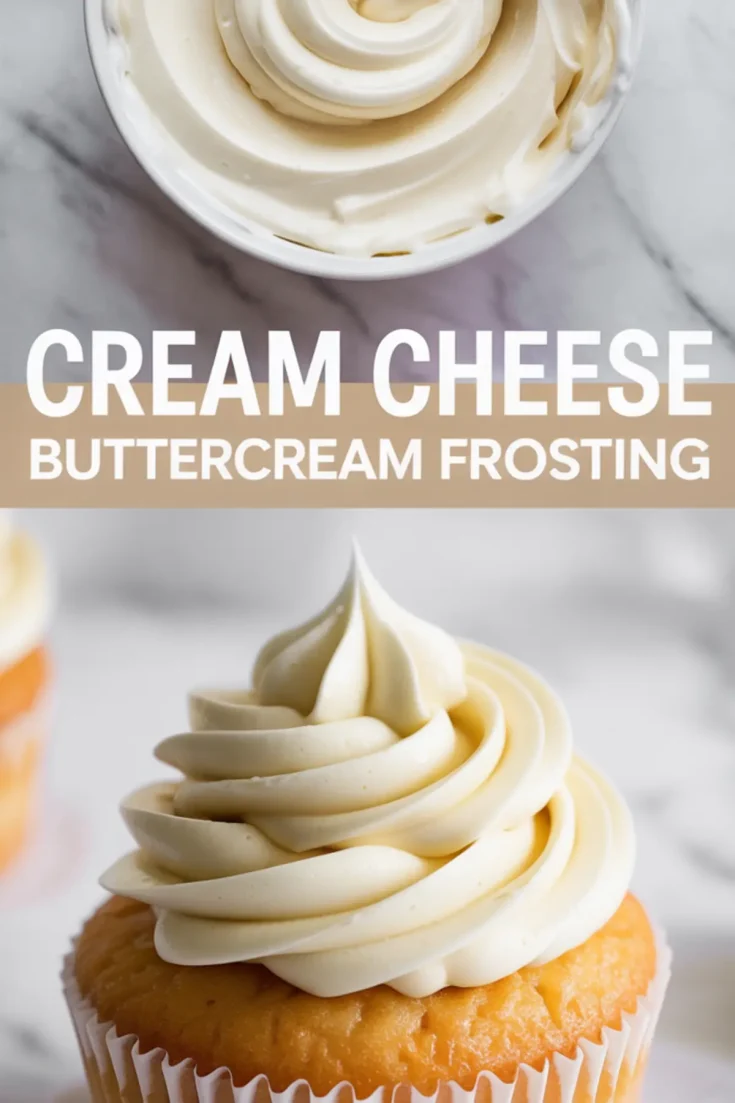
Cream cheese buttercream frosting blends tangy cream cheese with soft butter for a rich, fluffy finish. I beat the two until smooth, then add powdered sugar and vanilla until it holds peaks and spreads easily. The flavor lands right between sweet and sharp, which makes it ideal for carrot cake, red velvet, or cinnamon rolls. I’ve used this easy cream cheese buttercream frosting on everything from cupcakes to layered cakes, and it never slides or melts. If you want a cake frosting recipe that pipes well and stays soft, this butter cream cheese frosting checks all the boxes. I always make extra—it goes fast.
Ingredients
- 1 cup (226g) unsalted butter, softened
- 8 oz (226g) full-fat cream cheese, cold or slightly softened
- 4 ½ to 5 cups (540 to 600g) powdered sugar, sifted
- 2 teaspoons pure vanilla extract
- Pinch of salt
Instructions
- CREAM THE BUTTER: Beat the softened butter in a stand mixer or with a hand mixer on medium-high speed until it becomes pale, fluffy, and light in texture, about 3 to 4 minutes. Scrape down the sides of the bowl once or twice to ensure even mixing.
- ADD THE CREAM CHEESE: Add the cold or just slightly softened cream cheese to the whipped butter. Mix on medium speed until fully combined, being careful not to overmix, as overworking the cream cheese can cause the frosting to become too soft or runny.
- ADD THE SUGAR GRADUALLY: Begin adding the sifted powdered sugar in batches, starting with 4 ½ cups. Mix on low speed until the sugar is mostly incorporated, then increase to medium-high speed and beat for 1 to 2 minutes until the frosting becomes smooth and thick. If the frosting is still too soft for piping, add additional powdered sugar a tablespoon at a time, up to ½ cup more, until the desired stiffness is achieved.
- FLAVOR IT: Add the vanilla extract and a pinch of salt to the frosting. Beat again on medium speed for about 1 minute until everything is smooth and evenly mixed.
- TEST AND ADJUST: Check the consistency by lifting a spoonful to see if stiff peaks form. The frosting should be thick, pipeable, and hold its shape without slumping. If needed, refrigerate for 10 to 15 minutes to firm it up slightly before using.
Notes
Use full-fat brick-style cream cheese for best results. Avoid whipped or spreadable cream cheese, which can make the frosting too soft. For sharp piping details, chill your piping bag for 5 to 10 minutes before decorating.
Nutrition Information
Yield
1Serving Size
1Amount Per Serving Calories 12074Total Fat 262gSaturated Fat 160gUnsaturated Fat 84gCholesterol 717mgSodium 920mgCarbohydrates 2483gSugar 2431gProtein 16g

